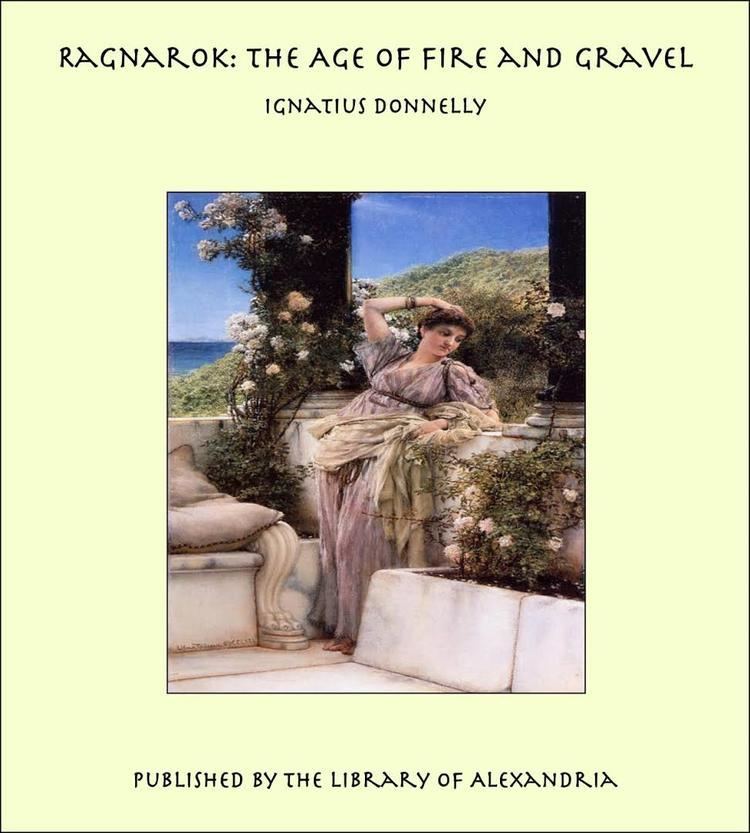7.4 /10 1 Votes7.4
Country United States Publisher D. Appleton & Company Pages 441 | 3.7/5 Goodreads Language English Publication date 1883 Originally published 1883 Page count 441 | |||||||||||||||||||||||||||||||||
 | ||||||||||||||||||||||||||||||||||
Similar Works by Ignatius L Donnelly, Atlantis books | ||||||||||||||||||||||||||||||||||
Ragnarok: The Age of Fire and Gravel is a book by Minnesota politician Ignatius L. Donnelly published in 1883. It is a companion to the more well-known work Atlantis: The Antediluvian World.
Author's arguments
In Ragnarok, Donnelly argues that an enormous comet hit the earth 12,000 years ago, resulting in widespread fires, floods, poisonous gases, and unusually vicious and prolonged winters. The catastrophe destroyed a more advanced civilization, forcing its terrified population to seek shelter in caves. As cave-dwellers, they lose all knowledge of art, literature, music, philosophy, and engineering.
He cites as evidence 900-foot-deep cracks radiating out from the Great Lakes, and stretching for many miles away. He admits it has been proposed that ice-sheets caused these cracks, but suggests that this explanation is improbable, likening them instead to 'cracks in a window which has been struck with a stone.' If ice sheets could produce such cracks, he asks, why haven't similar cracks been found anywhere else on the globe? He adds to this a discussion of surface rocks in New York City, which seem to have undergone a radical chemical change—the feldspar has been converted into slate and the mica has separated out from the iron, as if they had undergone tremendous heat and pressure, as they likely would in the event that a comet struck the earth. He rules out other theories that could have caused this, such as nitric acid and warm rains, by pointing out that this is an isolated incident, whereas warm rains can occur at any time and place and there's no archaeological evidence for the nitric acid's origins.
He points out many legends and myths from various cultures, such as Zoroastrian, Pictish, Hindu, and Ancient Greece, that are all suggestive of a comet striking the earth, the earth catching fire, poisonous gases choking people, and floods and tidal waves swamping large areas. He also points out early culture's tendency to heliotheism, which evolved from an insane gratitude to the Sun, after so many horrific days without it.
